
Over the past months I’ve Tweeted Paper Tips of the Day and received an enormous amount of feedback and engagement. These tips will help improve a player’s paper and become more comfortable with tournament Magic: the Gathering. Let’s get the ball rolling!
When playing cards like Memory Deluge that put other cards back onto the bottom of one’s library in a random order a player can shortcut by offering their opponent a cut once and asking if the opponent is alright with not offering a cut for similar interactions in the future.
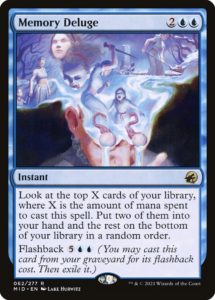
Memory Deluge is a good example of this interaction as most of the time the cards go to the bottom of the deck and their order is insignificant. In Modern, the use of Fetch Lands to shuffle one’s deck makes it unlikely the order will matter by the time a player has reached the last five cards in their library in most scenarios.
When playing these cards, make a good faith randomization and offer your opponent a cut the first time the interaction comes up; most opponents will decline the cut because it’s a waste of time. If you want to offer the cut because of the banter aspect, go for it and to each their own.
“Is it ok if I don’t ask again for a cut, but you can let me know if you change your mind?”
If your opponent decides to cut after the shortcut has been established it’s an easy fix. In the case of Memory Deluge, for example, taking two cards will mean that either two or five random cards went to the bottom of the deck.
I don’t bother to cut these random piles because even if my opponent could gain a slight edge by knowing the order they’d need to hold that info for a long period of time to use it. Most players will opt to do a quick randomization and move on with their game. The mental energy expended to gain such a slight and typically irrelevant edge simply isn’t worth the effort as a potential cheat which is why I’m in favor of shortcutting in these instances to keep the game moving forward.
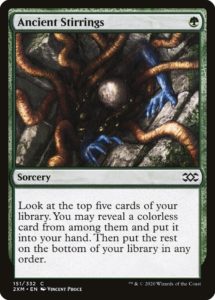
Ancient Stirrings takes less time to shortcut in this awkward cut scenario because it specifies to put the remaining 4 cards on the bottom of the deck in any order. Simply put the best cards drawn in the late game at the top of the stack and move on with your life.
The Cascade mechanic is a different beast. Modern Cascade decks only stop on a specific card, which means there’s a chance for a majority of one’s deck to be revealed. This approaches a full shuffle the larger the number of cards cascaded through becomes so it’s best to shuffle the cards being put back and offer a cut to the opponent.
Paper tip of the day: tournaments don’t have uniform rules enforcement level. The game is not the same at FNM compared to a PTQ or big cash event. Focus on player retention at FNM to support the scene. Lots of cash on the line means it is expected to not let as much go.
— Kyle Boggemes (@Boggememes) April 5, 2022
When I play in a big tournament I’m at the event to try and win it. I also understand my opponent is likely playing to win as well because there is big prize money on the line.
If my opponent misses a trigger I will remind them at the point of no return. Even a mandatory trigger can be missed in paper Magic. In the case of a missed trigger, the ruling will be that the opponent HAD the opportunity to put a beneficial trigger on the stack and I then declined it be put onto the stack every time. In a competitive tournament it is the player’s responsibility to remember their own beneficial triggers, it’s nothing personal if my opponent forgets and I don’t remind them with prizes on the line.
A big event can draw players from different States and even countries depending on the level of prize support. If you build it… they will come! Large events with high stakes prizes are my competitive outlet for playing Magic at the highest level and familiarity with the rules of competitive tournaments is an important part of tournament play.
Casual events, such as FNM (Friday Night Magic) at the LGS (local game store) are a different story. The environment should be more relaxed because the prize support is smaller and attendees will expect a less strict environment. As a competitive tournament player, I tend to focus more energy on community building and player retention at the local play level.
The health of a LGS can be negatively impacted by cutthroat attitudes at FNM. New and casual players are most likely to be soured by missing a trigger and may not come back. Especially when playing at the LGS experienced tournament players should be cautious about rules lawyering too hard and creating an unwelcoming environment for new players learning to play local tournaments. Word of mouth matters and we don’t want to give our local game store communities a bad wrap.
While we may give up some short run equity by letting some small things slide, it will be repaid in the long run by fostering a booming local tournament environment. I was lucky to have a positive FNM experience when I started out in MTG back in 2001. Who knows what would have happened if I ran into rude opponents when I was a preteen?
These are just my opinions on how to handle common tournament gray areas such as missed triggers. In less competitive events I’m easy going about reminding my opponent of their triggers but I don’t ask for take backs or for my missed triggers to be put onto the stack retroactively in any events. Even in non-competitive events, I’m looking to practice playing my best Magic while being respectful that my opponents are likely not all tournament specialists.
A thriving local tournament scene has an agglomerative effect. When players enjoy playing locally they often get the fire to travel to larger competitive events.
I’m typically leery of adding my own interpretation to floor rules, but in the following case I make an exception:
Paper tip of the day: pile shuffling is a very inefficient use of time. A couple standard shuffles accomplish the same thing. It can be useful to count your deck without thinking.
— Kyle Boggemes (@Boggememes) March 30, 2022
When I started playing tournament Magic 20 years ago “pile-shuffling” was a common way to shuffle a deck that has since been debunked as not being a legitimate form of randomization. The standard “mash shuffle” is about as effective and more quickly executed.
Pile-shuffling one time is an easy way to count the number cards in your deck before a game and is a ritualistic way to begin a game in a way that puts a player at ease:
Paper tip of the day: be mindful of the land card stock you choose for limited decks. They could curve differently than the spells from the newest set. Example: ice age lands can be flat and rigid compared to newer sets that concave. I like to bring newer basics.
— Kyle Boggemes (@Boggememes) March 29, 2022
Magic is an old game. Over the course of three decades the raw materials used to create sets have changed. I bought some Ice Age basic lands for a Standard deck a couple years ago and the difference in cardstock became apparent when mixed with newer cards. The Ice Age cards felt rigid and flat while the new cards concave.
The takeaway is to be mindful of the types of lands you use for your decks. This can also come up if you like to bring your own basics to limited tournaments. I prefer Zendikar full art lands because they are new enough that I can’t feel the difference.
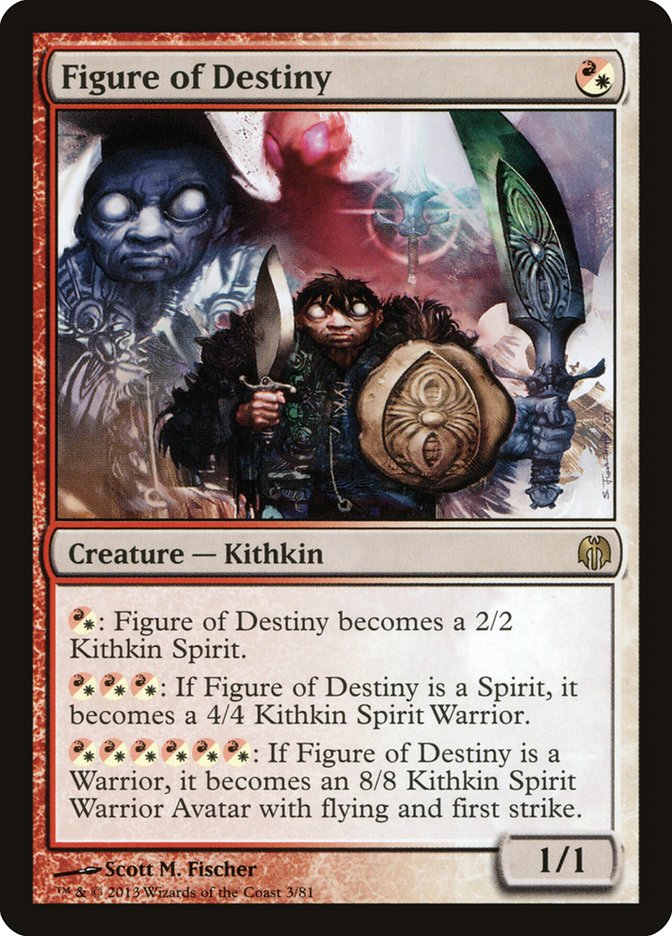
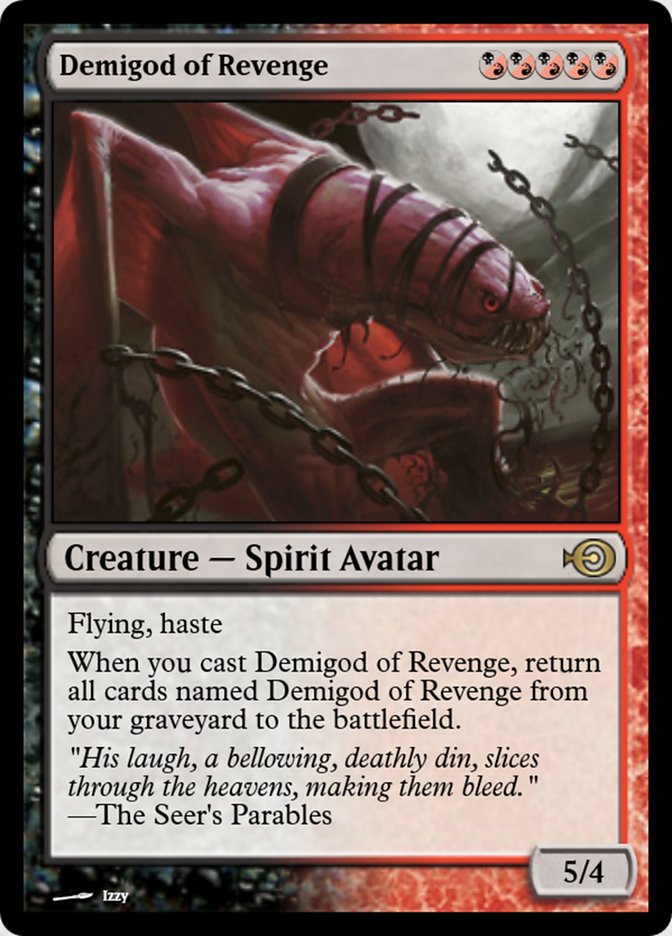
Foils are extreme versions of differences in cardstock. Some foils, for example Promo Figure of Destiny and Demigod of Revenge, tended to warp. I also don’t use foil basic lands to limited decks because of their tendency to curl. In general, I avoid foils in tournament decks because they feel different (although they are still legal).
Paper tip of the day: Protecting decks with old cards is a good idea with perfect fits. Some sets are more likely to whiten when putting them in the sleeve such as Rav shock lands. Again, depends on the card stock from the set. Don’t take them out willy nilly.
— Kyle Boggemes (@Boggememes) March 31, 2022
In the same vein as the card stock, some cards are more fragile and detectable than others. I have plenty of original Ravnica block shock lands. They are special to me because they were signed by Rob Alexander at a Grand Prix fifteen years ago. When I protect them with Perfect Fits the left side of the black border begins to wear away. Newer cards don’t have this issue and it’s not a uniform issue with every expansion.
Paper tip of the day: exalted, prowess, and other similar triggers don’t need to be announced until damage is dealt. They work differently than most triggers.
— Kyle Boggemes (@Boggememes) April 3, 2022
Triggers don’t need to be announced until they become relevant. In the case of Siege Rhino the ETB “drain trigger” requires an update of life totals upon resolution. If you fail to immediately announce the trigger it is missed – it didn’t happen. The same can be said for most other triggers in the game.
Changes in power and toughness have a key rules distinction because the changes are only deemed relevant when it’s time for damage to be dealt. We can apply this tip in a couple of different ways. If an opponent is ready to tell you an Exalted trigger is smaller because the trigger was missed you may correct them. Knowing this is also helpful when you think you’ve missed announcing an Exalted trigger, since you don’t need to put the trigger and only need to confirm it was applied in combat when damage is dealt.
In tournaments changes in power and toughness can be used to gain advantage. If a player attacks with an Exalted trigger bonus he or she doesn’t need to announce the attack bonus immediately (only when damage is dealt) and it’s up to the opponent to clarify creature stats during declare blockers step before damage is dealt.
There are pros and cons to the current rules surrounding missed triggers. Exalted and Prowess are both cases where the current rules create opportunities to obfuscate the board state.
A judge verified that changes in power and/or toughness immediately affect the game because it changes combat decisions. The clarification of relevance could help mitigate confusion while staying consistent with regard to other missed trigger rulings. I like intuitive rules and to play by those rules.
Paper tip of the day: when sideboarding put a few extra cards into your deck and the opponent won’t know how many cards you change. Boarding in all 14/15 is washed because the opponent knows there’s no info to gain.
— Kyle Boggemes (@Boggememes) March 26, 2022
It is a common occurrence during sideboarding that players often lay out the cards they plan to bring face down on the table in front of them. Showing an opponent how many cards we plan to bring in gives away a ton of information to our opponent. In many cases, knowing the number of cards coming in or out may give an opponent near-perfect information about your sideboard plan.
Even if you don’t know an opponent’s exact cards, you still get a sense of how post-board games will play. If my opponent pulls out two cards, or seven cards, I can anticipate the degree their strategy is likely to have deviated.
The next level in sideboarding is to shuffle all 15 sideboard cards into one’s deck and then remove 15 cards from the deck. It takes a little extra time, but this maneuver conceals the number of sideboard cards in our deck from the opponent. Lastly, you can further hide sideboard information by putting a few extra cards (that are obviously not coming in) face down on the table to make it look like you’re bringing in more cards than you actually are. It not only hides your plan, but an opponent might use the misinformation to their detriment.
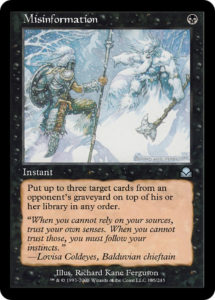
You can further hide sideboard information by putting a couple extra cards that are obviously not going to stay in your deck face down on the table. This not only hides your plan, but the opponent may use that false information to their detriment.
Paper tip of the day: don’t end a match and tell your opponent they have a bad matchup. They may not agree and if you want to learn something you can ask how they feel about the matchup instead.
— Kyle Boggemes (@Boggememes) March 25, 2022
Not only a Paper Magic tip, but a life tip. Don’t take arguable stances definitively. Not everyone feels the same way as you do and there are less abrasive ways to better explain a point of view.
Most matchups are not so lopsided that a win or loss can be explained away by deck choice. Many of the matchups are within 10% of 50/50. Being on the play or draw aspect, for instance, can be a determining factor with a lot of impact.
Player 1: This matchup is a bye. I just counter everything you play.
Player 2: You’re wrong. I play around your counters and a couple threats sneak through to win.
Both players are correct some of the time. In addition to these two types of games, there are times both archetype’s fail rates come into play. The play or draw dynamic further complicates things. At the end of the day, each of these types of games will happen a certain percentage of the time which aggregates to the true matchup.
I like to avoid these types of conversations because players will test a matchup, have certain preferred play styles, and card ownership constraints which also informs deck choice. It’s best to avoid such conversations, especially after you’ve just won the match and your opponent might not feel talkative. You might feel differently after a loss, but it’s best to ask the opponent if they want to talk about the game before a barrage of unwanted questions and opinions.
BROKE: “Yea, this was a good matchup for me.”
WOKE: “Do you mind if we talk about the match?”
Paper tip of the day: Keep your companion somewhere other than the exile zone to avoid trying to add to hand a second time in a game. I put my companion on my deck box to start the game and move to exile if it’s removed from the game.
— Kyle Boggemes (@Boggememes) April 1, 2022
There isn’t one right answer here. I use the top of my deck box as the companion zone, but you can also keep it somewhere else on your playmat that is distinguishable from other cards in exile. Casual players put commanders and companions sticking out face up in their deck, but I don’t recommend this at a tournament.
Paper tip of the day: matte black dragon shield is a popular sleeve. When a card goes to the other side like spreading seas pull it slightly out of the sleeve so it returns to the rightful owner at the end of game.
— Kyle Boggemes (@Boggememes) March 23, 2022

